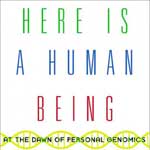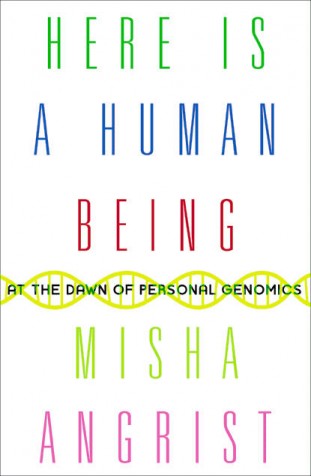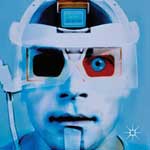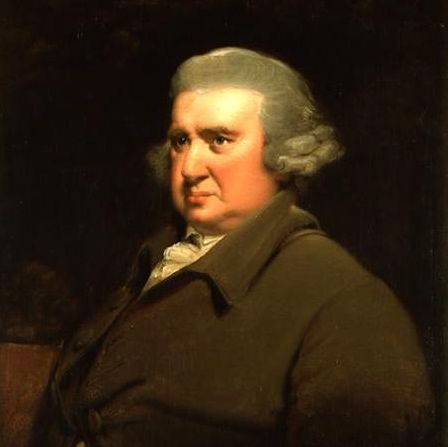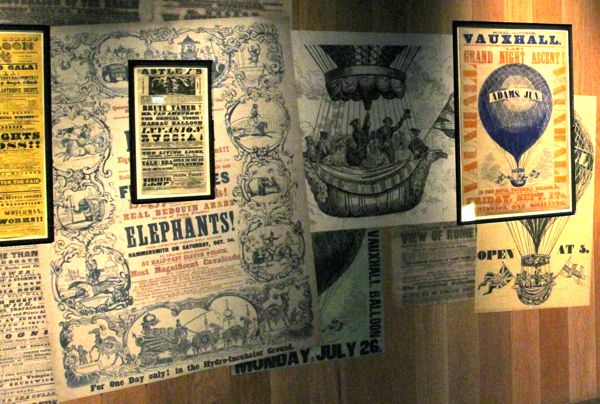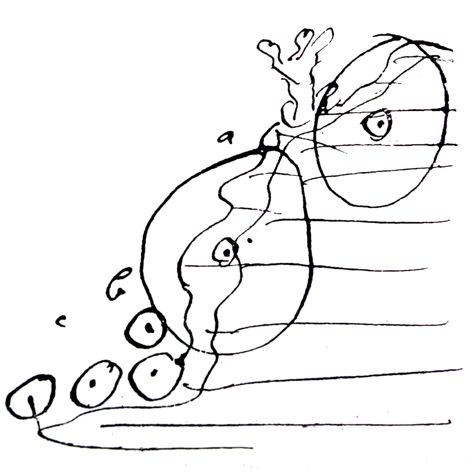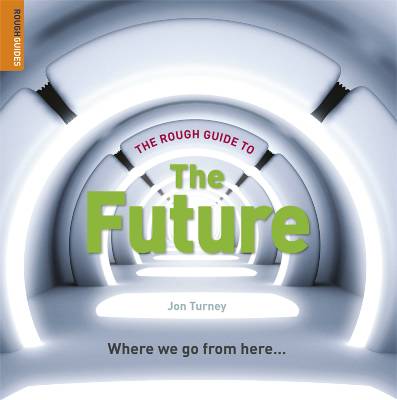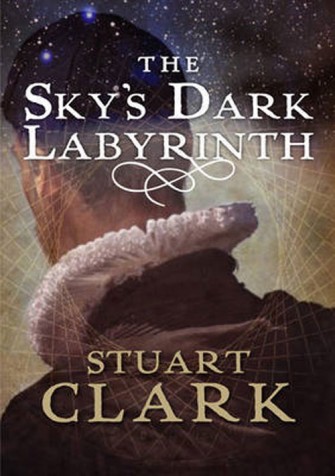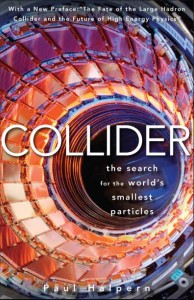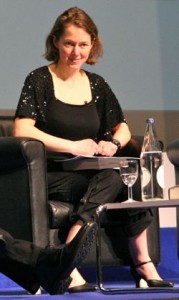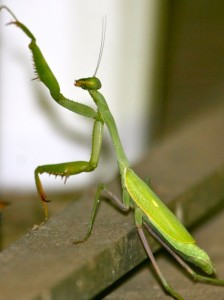- Hardcover: 352 pages
- Publisher: HarperCollins; 1 edition (1 Dec 2010)
- Language English
- ISBN-10: 0061628336
- ISBN-13: 978-0061628337
- Product Dimensions: 15.2 x 2.9 x 22.9 cm
Between 2006 and 2010, half a million 40-69 year olds, including yours truly, joined the UKBioBank project. We agreed to share lifestyle and medical information – not to mention blood, saliva, and urine samples – all to help researchers get a better handle on the incidence, cause, and treatment of disease. With enough subjects, the logic goes, associations between an individual’s characteristics and their health can inform our understanding and treatment of the wider population.
No surprise then that only a few pages in to Misha Angrist’s Here Is a Human Being: At the Dawn of Personal Genomics I spotted the obvious link between his experience as the fourth subject in Harvard Medical School’s Personal Genome Project (‘PGP) – the theme of his book – and my own humble contribution to medicine. Both projects are based on ideas around association, to one degree or another involve genomics in support of healthcare goals, and as James Watson said to Angrist on the value of personal genomics, they create “a more compassionate, better society”.
Clearly, there must be differences, otherwise I’d have got to write the book and hang out with the likes of Stephen Pinker – with Angrist settling for the return bus fare to a medical testing center in Croydon. The distinction is mainly down to issues of privacy, plus the fact that Angrist’s genome was sequenced when it was still a big expensive deal to do that.
UKBiobank data is anonymised. Even the researchers working with my genome (if and when it’s ever sequenced) won’t know my name . Angrist’s PGP data, however, is public: genome, life style, medical history; it’s just out there – totally, with his name on it. To take part in PGP you have to take an exam to show you know what you’re doing; those in the spearhead PGP-10 group required a Masters level training in genetics. More importantly, as Angrist gets to see his own stuff under the PGP rules, he can share the motivations, emotions, excitement and anxieties that go with that kind of exposure and self-knowledge. (How effective promises of confidentiality in programs that have them really are is a whole different, but related, topic.)
Human genomics is a young field. The first composite human genome was published by the U.S. government’s Human Genome Project (HGP) in 2003. A parallel commercial project led by Craig Venter and the Celera Corporation published Venter’s personal genome in 2007. Early processes were slow and costs correspondingly high; but the promise, particularly for medicine, was great. Now, as the dream of a medical revolution fades, and free-falling costs open the way for mass genomic profiling, attention has turned more to protecting the public from what some see as a useless, possibly dangerous, product of an immature science – peddled by an exploitative industry. Insurance companies circle round the latest hot tool for risk minimisation, ready to turn our genome against us. Bridging the exclusive and commodity phases on the human gemonics timeline, Angrist brings an insiders eye to bear on an uncertain period. As he says “I had arrived at the theatre early enough to grab a good seat, but the carpenters were still building the sets.”
It’s fashionable to talk about personal genomics in terms of its profound complexities and limitations, and not its useful applications. You can see why though. In predicting disease, genes tell only part of the story alongside environmental factors. As Angrist says, we need to link environment (was a child exposed to lead paint), phenotype (how much did it weigh), and lifestyle (what did I have for breakfast) with personal genomic profiles. He cites rheumatoid arthritis as an example where from twin studies we know the risk is only 50% genome related. Disease is sometimes associated with single defective genes, but more often is the combined expression of many genes interacting with each other and the environment. Relevant genes may exist anywhere throughout the genome, requiring researchers to search the whole smash – with no clues on appearance or location. To complicate things further, the same disease is caused by different gene combinations in different people.
That’s not to say some genetic associations don’t give personal genome candidates pause for thought. When, in a separate study, James Watson’s genome was sequenced, he chose not to know his risk of the incurable Altzheimer’s disease; Angrist’s fellow PGPer Stephen Pinker made the same choice. As interesting perhaps is the fact that many people do want to know their Altzheimer’s risk – despite the disease’s incurability, and that studies show they can handle the knowledge. Angrist has a special interest in the breast cancer gene variants BRCA1 and BRCA2, as his daughters would be at an 80% life-time risk were he to pass on defective versions; it seems personal genomes aren’t so personal after all. In one of the most human moments in the book, Angrist sits alone with his genome report, about to discover this type of information for the first time.
Angrist is at pains to show where human genomics contributes beyond disease prediction, pointing to work on: drug efficacy across ethnic groups and individuals (testing for hyper-sensitivity to warfarin blood thinner), resolution of paternity disputes (10% of fathers are not biological), donor screening (of blood and sperm), and identification of lost racial origins or heritance. One company specialises in providing genome-based nutritional advice, perhaps advising someone whose gene mix inhibits calcium absorption to consider taking a supplement. Ethically intriguing applications include the use of genetic selection to identify our ideal partner or love match. These on top of the widely used law enforcement applications of DNA we know and love from TV shows like CSI.
Angrist weaves plenty of historical, technical, and commercial detail into his personal story, much of it original and drawn from interviews with fellow PGP’ers (a truly mixed bag of characters and motivations in their own right), PGP Founder George Church, and a host of specialists in genomics and medicine – including some insightful tid-bits from former HGP Director Francis Collins and James Watson.
You won’t retain it all – I sometimes lost track of who exactly developed what, when, and where; who went bust and reappeared again, etc. – but the main take-away is clear enough. That despite any limitations and historical hype – “the marketing of personal genomics has outpaced the science” – personal human genomics is far from valueless, and has great potential if we hang in with it. Specifically, Angrist believes the tangled complexity of genotype-phenotype associations may unravel if a sufficiently large sample of cross-referenced data is available. And with over a thousand active participants in the PGP in 2012, and thousands more in the queue, it looks like that might just happen.
RECOMMENDED.
Misha Angrist blogs at GenomeBoy.
Also of interest:
http://thednaexchange.com/2013/11/29/the-fda-calls-a-penalty-on-23andme/
